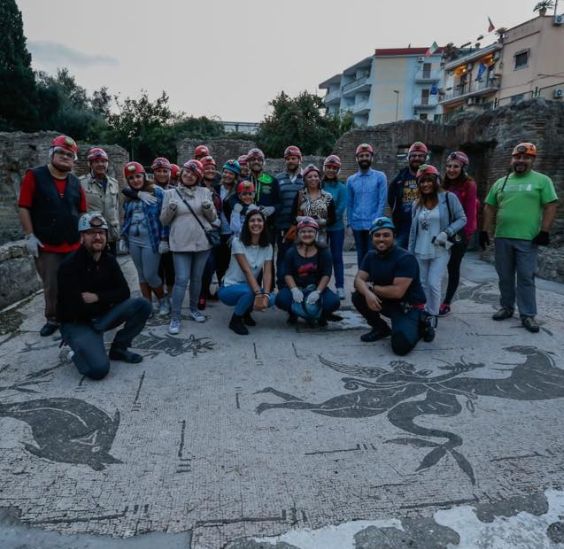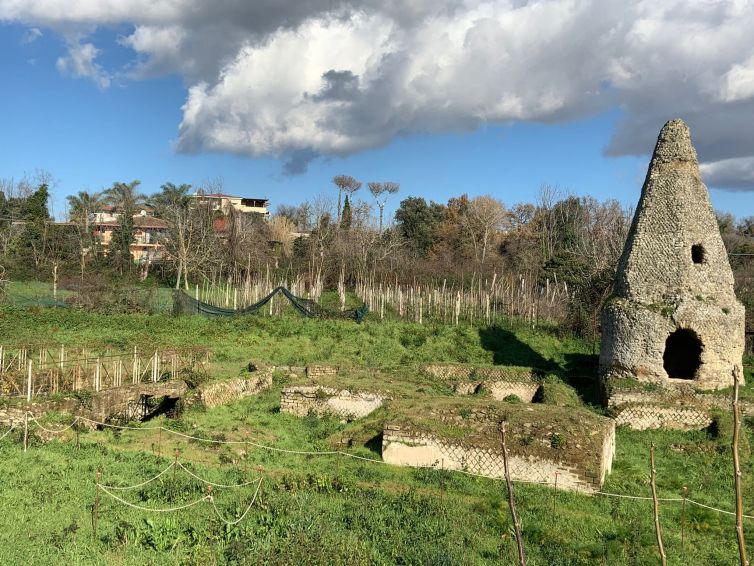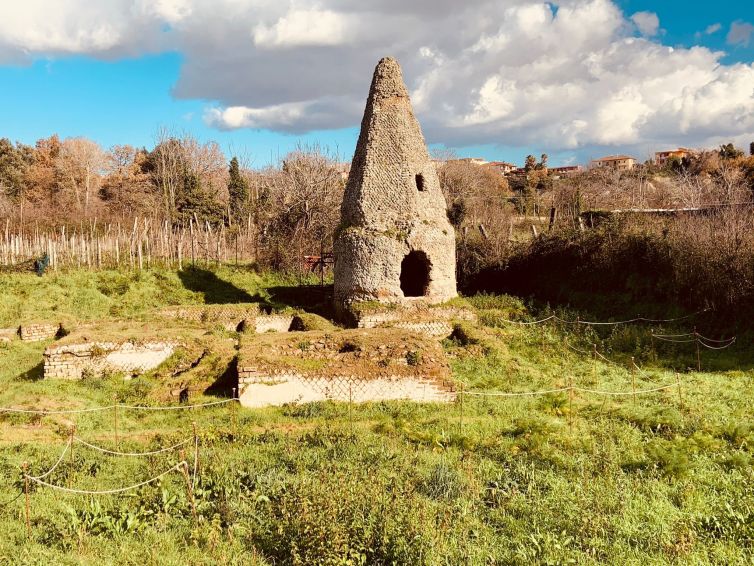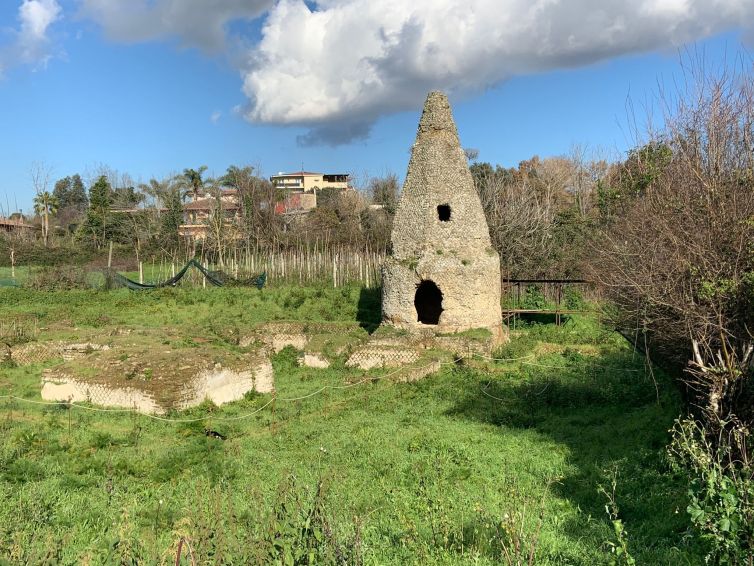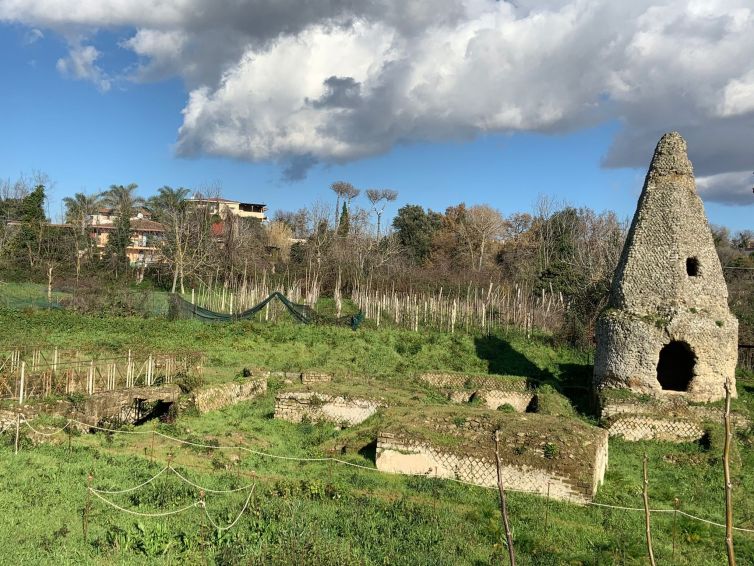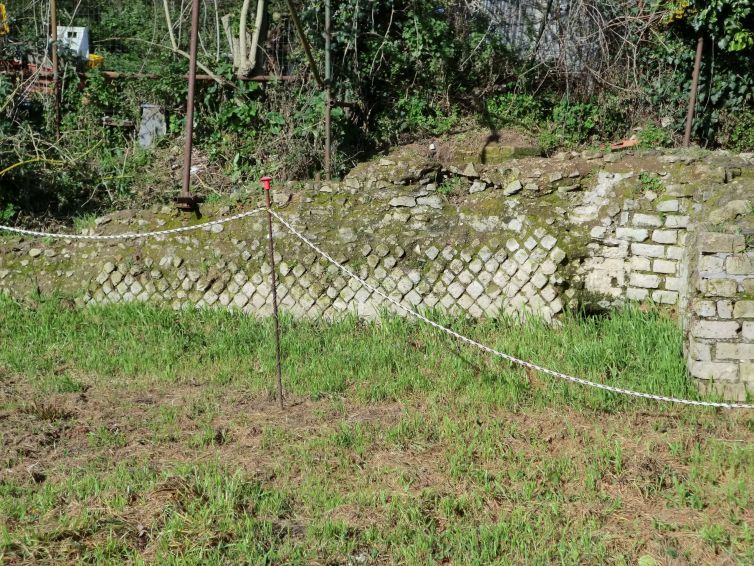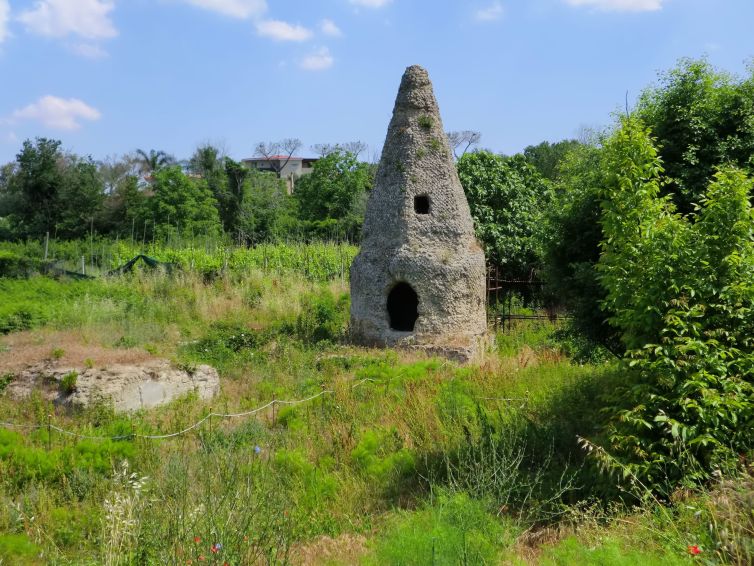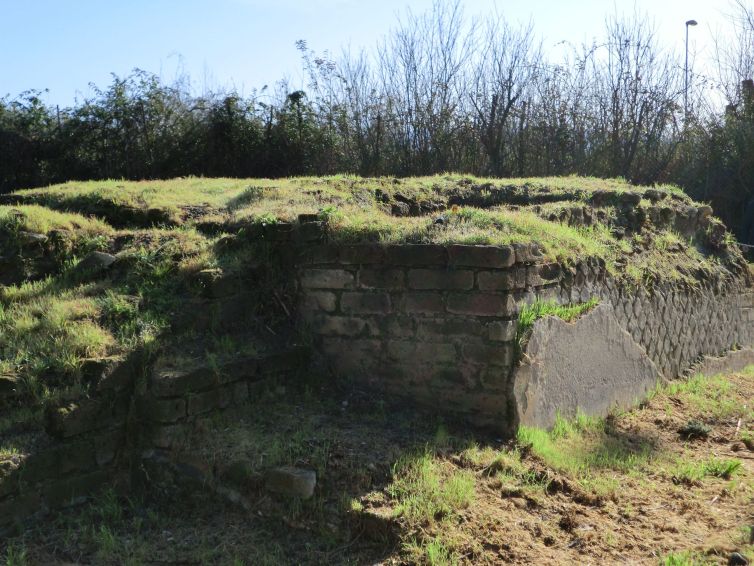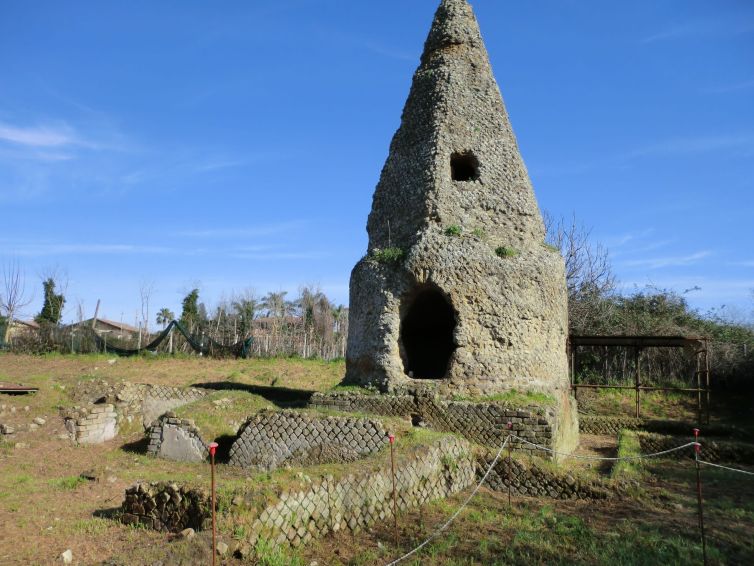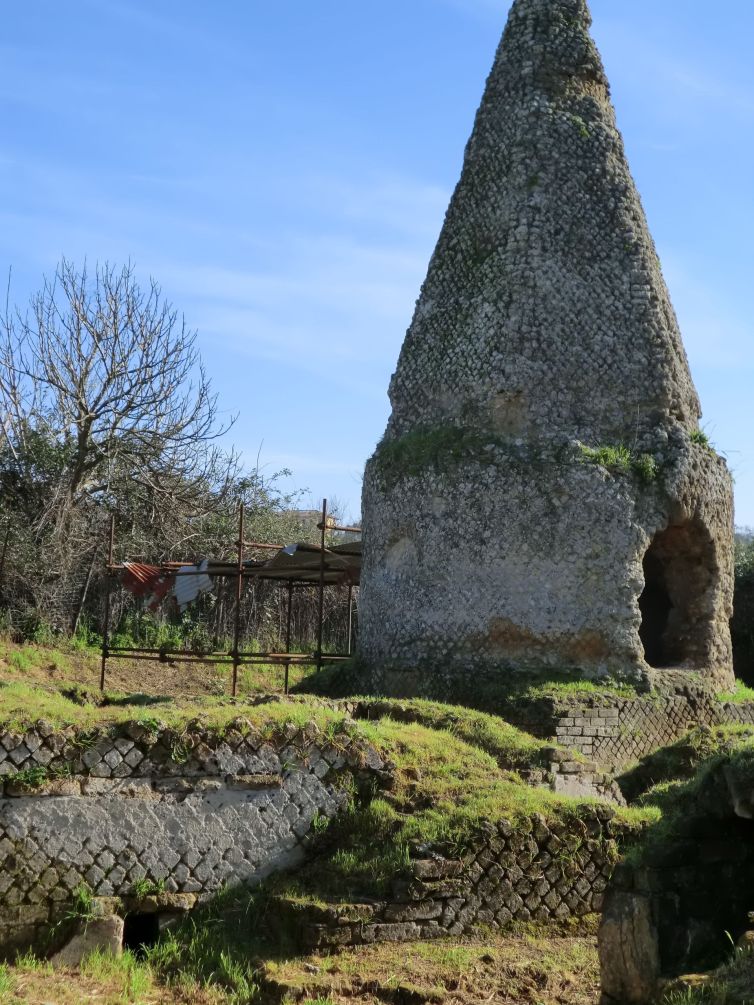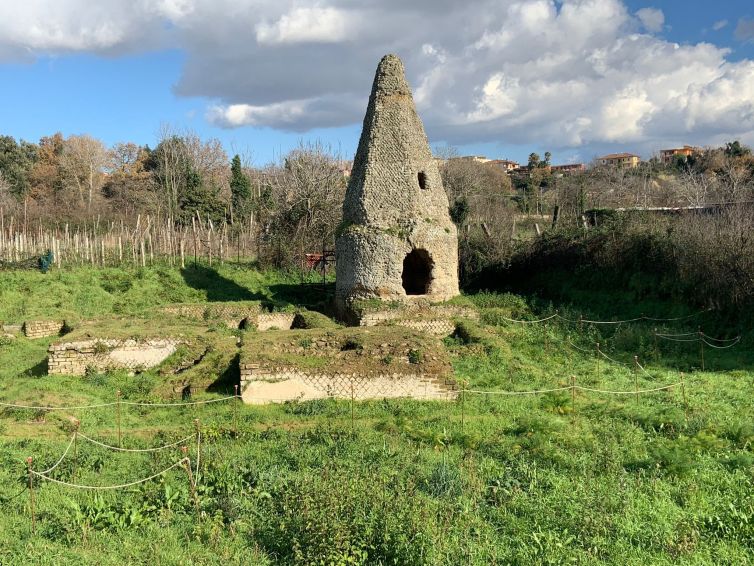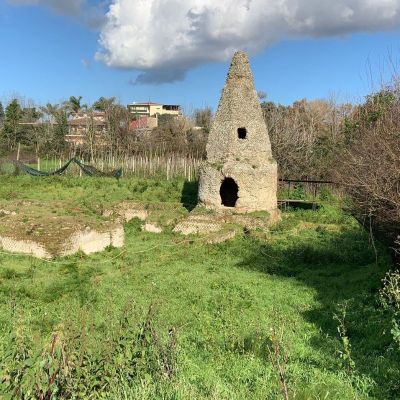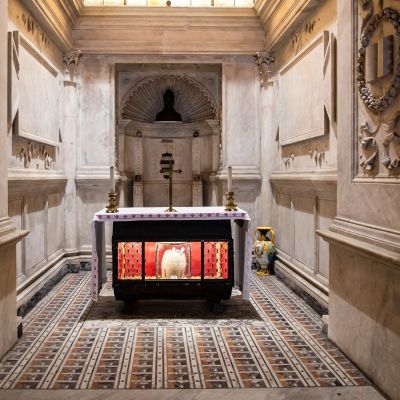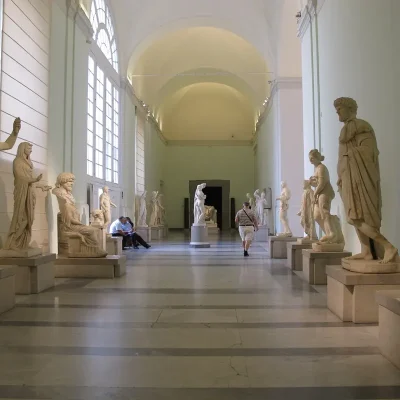The Fescina Mausoleum
Nestled in Quarto near Naples, the Mausoleo della Fescina stands as a testament to ancient Rome’s cultural and architectural diversity. This unique site, rediscovered in 1972, showcases the influence of Eastern traditions on Roman funerary practices, reflecting the deep connections between the Roman Empire and the broader Mediterranean world.
The Mausoleum’s Era and Architectural Significance
The Fescina Mausoleum, dating back to the early imperial era of Rome, is a remarkable example of how Eastern architectural influences permeated Roman culture, especially in funerary practices
This period was characterized by Rome’s extensive network of trade and cultural exchange with the Eastern Mediterranean, which not only enriched the empire’s economy but also its artistic and architectural expressions. The mausoleum’s conical design is an architectural nod to the Eastern pyramidal structures, suggesting a blend of Roman and Eastern funeral traditions. This design choice could indicate the deceased’s or their family’s status and their cultural affiliations or preferences, showcasing a personalized approach to memorialization that was uncommon in the region at the time.
The significance of the Fescina Mausoleum goes beyond its architectural uniqueness. It represents the cultural syncretism that defined the Roman Empire, reflecting the complex interplay between local traditions and foreign influences. By examining the construction techniques, materials used, and the mausoleum’s spatial organization, we can gain insights into the technological advancements and artistic sensibilities of the era. Furthermore, the mausoleum’s strategic location near Naples, a hub of trade and cultural exchange, underscores its role in showcasing the wealth and cosmopolitan nature of its patrons.
This architectural marvel not only served as a final resting place but also as a statement of identity and status, bridging worlds between the living and the dead, and between the Roman and the Eastern. Its preservation and study offer invaluable lessons on the diversity of ancient Roman society, the importance of cultural exchange in shaping civilizations, and the universal human desire to commemorate and honor the deceased in ways that reflect personal beliefs and societal values.

Historical Naples Tour: Origin, Cults & Legends
Embark on a journey through the heart of Naples, a city steeped in tales and traditions that date back to the Greeks. This comprehensive tour offers an immersive exploration of Naples’ most captivating churches, vibrant squares, and historic streets. Wander the ancient city center accompanied by your guide, who will enrich your walk with tales of Naples’ rich cultural heritage. Along the way, indulge in a moment of authentic Neapolitan life with a stop for the city’s famed espresso. Discover the best of Naples effortlessly, without the need to navigate maps and guidebooks. Your guide will provide valuable insights into the city’s past, cultural nuances, and gastronomic delights. Visit the renowned nativity scene artisans on Via San Gregorio Armeno and savor a taste of Naples at a local coffee bar, experiencing the quintessential Neapolitan espresso.
Functional Aspects of the Mausoleum
The mausoleum’s design and layout catered not just to the act of burial but also to the commemorative rituals that followed death. These rituals were essential for ensuring the deceased’s transition to the afterlife and maintaining their memory among the living.

Roman funerary practices involved complex ceremonies, including offerings, feasts, and sometimes games, to honor the dead. The presence of altars and ritual enclosures in the mausoleum complex suggests that such ceremonies were conducted on-site, highlighting the mausoleum’s importance as a place for both mourning and celebration of the deceased’s life. The design and architecture of the mausoleum, therefore, had to accommodate these multifaceted rituals, making it not only a tomb but also a sacred space for venerating ancestors.
Furthermore, the inclusion of cremation sites and burial niches within the mausoleum indicates the adoption of both cremation and inhumation practices, reflecting the diversity of burial customs in Roman society. This versatility in funeral practices underscores the mausoleum’s role in serving the spiritual and social needs of the community, providing a space where the living could interact with the dead through rituals that affirmed familial bonds and social continuity.
In summary, the functional aspects of the Fescina Mausoleum reveal the depth of Roman funerary traditions, where architecture served both practical and ceremonial purposes, embodying the complex relationship between the living and the deceased in ancient Roman culture.
The Story of Discovery
The year 1972 marked a pivotal moment when the Gruppo Archeologico Napoletano stumbled upon what initially appeared to be a nondescript agricultural storehouse.
This discovery, however, soon unfolded as one of the most significant archaeological revelations in the region, uncovering a mausoleum with a unique conical structure that challenged previous understandings of Roman funerary architecture in Campania.
The excavation process revealed a site of immense historical and cultural value, a necropolis that offered a window into the funeral rites, social hierarchies, and cultural exchanges of ancient Roman society. The uncovering of the mausoleum was not just about revealing a physical structure but also about bringing to light the stories and lives of those who were part of this ancient community. This discovery underscored the importance of archaeological diligence and curiosity in uncovering the layers of human history that lie buried beneath our feet.
The journey from discovery to recognition was fraught with challenges, including the preservation of the site against natural and human threats and the need to secure funding and support for its study and conservation. Yet, the effort to understand and preserve the Fescina Mausoleum has provided invaluable insights into the architectural innovations and cultural dynamics of ancient Rome, highlighting the intricate connections between the Roman Empire and the broader Mediterranean world.
